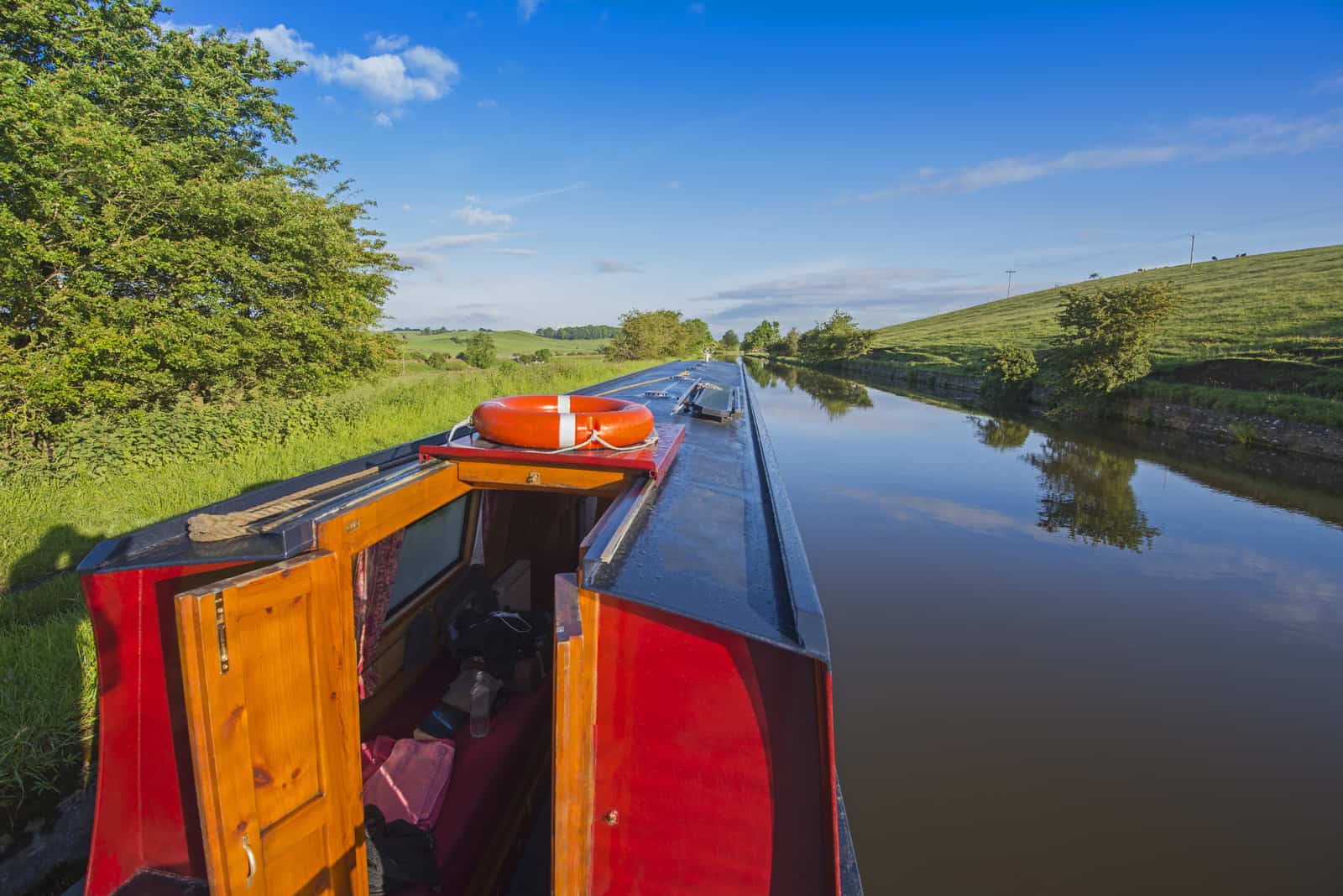Welcome back to Canal Boat UK. Today we aim to tackle head on some small but common problems you might find with a narrowboat. In this article we will give you tips to help you fix these problems so that you don’t have to waste time or money figuring it out the hard way 🙂
My Narrowboat’s Water Pressure is Low! What to do?
A lot of narrowboaters face this issue. They turn on their taps and have low or inconsistent water pressure. It might be a trickle, or it might even start normally and turn into a trickle! Either way is very annoying!

Understanding Narrowboat Water Systems
In order to fix your narrowboats water pressure issue, you first need to understand how the water systems work on your boat. The common setup is as follows.
The narrowboat will usually have a water tank at the front of the boat. The water will then be piped into your boat through the following things. Firstly, it will pass through a filter to get rid of any unwanted gunk. After this, the water will pass through the water pump (the thing that actually pumps the water in the first place!). Finally, it will pass through an accumulator tank. This is something that holds onto some water (and pressure) so that your water pump can cycle less and have a longer lifespan.
Make These Checks First
At each point that your water passes through, check to make sure that the flow is OK and not obstructed in any way. Make sure the filter is clear and that the accumulation tank is operating at the correct pressure (if you are not sure contact the manufacturer).
Also, most water tanks have an air vent in them too. Check to make sure this is not blocked in any way.
If This Doesn’t Work?
If you had no luck with the checks before fixing your low water pressure, you should then test your water pump to see if it is working as expected. The easiest way to do this would be to fill up a bucket with water and test the water pump from that. You would do this by taking the pipe off of the water tank and placing it in the bucket of water. If the water pump is working fine, the problem probably lies with the tap on the water tank. If not, you probably have a faulty water pump and need a new one!
Before You Buy a New Water-pump!!
Most water pumps have a screw on them to set the pressure they pump at. Before you go out and splash the cash on a new one, make sure you check for this and see if you can up the setting! You would feel like a real wally if this was the problem 🙂
Avoid Your Narrowboat Sinking!
Every narrowboaters worst nightmare is their pride and joy sinking without a trace! Take a look at this video if you need reminding of the reality of this situation!
This is a pretty extreme example, but think of it as a warning! Would you want this to happen to your narrowboat or the one you hired? All of this couple’s material possessions were destroyed in literally a handful of seconds.
Common Causes of Narrowboats Sinking
The Dreaded Lock Sill
The end of a lock (by the upper gates) has a raised cill. This is dangerous when you are going down in a lock, as the cill won’t be visible. If your boat gets stuck on the cill as the water level drops, this could spell disaster. Most boaters are aware of this problem these days, especially as most locks have warning signs and white lines telling them where to avoid. So, when in locks, keep your boat away from cills!!
The Weed hatch
The weed hatch is one of the single most important parts of your narrowboat to reinforce and improve in order to prevent it from sinking. Seriously, any sign of leakage you should change it out!
The idea of the weed hatch is to give quick access to your propeller if weeds are stuck in it (hence the name). The problem is that this quick access means you are opening your boat up to the canal water and if you don’t seal it back up properly you could sink your boat! When the propeller starts spinning water will start getting on your boat.
Of course it isn’t always a boat sinker, it all depends on how serious the leak is. But just the possibility of sinking should make you watch your weed hatch like a hawk!!
In our pre-cruising checklist we talk about the importance of checking your weed hatch. It really should be something you check this regularly.
As well as checking your weed hatch for leaking every time you want to cruise, take a regular look at the integrity of the seals on your weed hatch. Replace them at the slightest sign of degradation! And test it with the engine on and in gear, as leaks will only be obvious with the propeller spinning.
Watch out for old design weed hatches that just use long bolts and wing nuts to tighten your weed hatch up. These do of course work, but are more likely to fail. Much better to go with the more modern design with bars going across the weed hatch cover to. Often these bars are screwed down into place. Much more secure 🙂
Many boaters that have experienced weed hatch sinkings say that it is almost like ‘pulling the plug’ out of your narrowboat. So stay safe and check it regularly 🙂 OK, I think I can get off my soapbox now 🙂
My Narrowboat is Running Slow!
This article has had a lot of weed hatch talk! And here’s some more! If your boat seems to be running slow and sluggish when moving down the canal it probably has a problem with the propeller.
There is quite a bit of debris in the canals that can get stuck in or twist around your propeller. Not only does this put undue stress on your narrowboats engine, but it will also slow down the speed the propeller turns. This is why your boat seems sluggish.
So pull over, turn off your narrowboat and put the keys in your pocket (just to make sure you don’t chop your hands off on the propeller!!). Open up your weed hatch and take out anything you find carefully with your hands. Sometimes pieces of wood can even get wedged in there, so you might need a stick or something to get things like this loose.
When you are done follow all our previous weed hatch advice, make sure it is fully sealed up again before you set off 🙂
Happy Narrowboating!
That’s all folks! Hopefully this article will keep you from some of the main narrowboat mishaps.
If you have your own experiences of problems you have faced on a narrowboat, let us know in the comments below (oh, I’m a poet and don’t know it!!).



![What Happened to Cruising The Cut [Narrowboat Youtuber]](https://canalboatuk.com/wp-content/uploads/2022/08/cruising-the-cut-youtube-channel-211x150.png)
